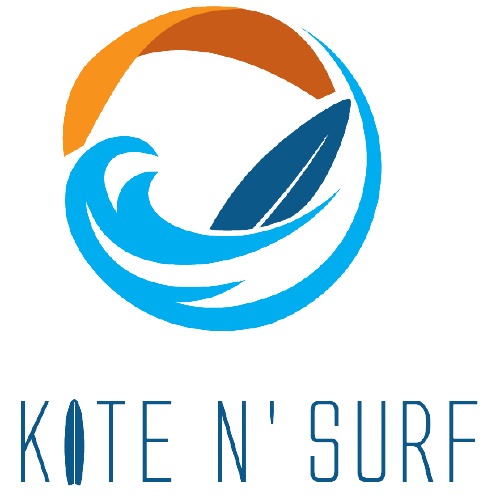Wing surfing lessons in Dubai
Wing surfing or wing foiling is gaining a lot of popularity around the world and especially here in Dubai and in Palm Jumeirah. It is more because of the flat water conditions and the ease to learn the sport.
We offer private one-on-one lessons for wing foiling and even group lessons for groups of a maximum of 4 people. The lessons are available for both beginners, as well as those who are looking to improve their riding techniques.
Wing surfing school in Dubai
At Kite N’ Surf, we offer Wing surfing lessons suitable for beginner, intermediate and advanced levels for people of all ages in Nessnass Beach and in Palm Jumeirah.
Our instructors are fluent in more than 3 languages, including English, Arabic, Italian, and Russian to name a few, and are IKO and VDWS qualified. We are a team of seasoned watermen. Our years of experience are constantly updated as we meet and instruct more and more people from all walks of life.
You may be wondering, what are our wings and boards of choice? Well, we use the newest wing gear from Cabrinha Kiteboarding, Takuma concept, and Fone with our gear being updated every season so that you have the perfect setup to learn this exciting watersport as quickly and easily as possible.
| Wing Surfing Lessons (Private One on One) | Time | Price | Book Now |
|---|---|---|---|
| Wing Surf Lesson | 2 Hours | 800 AED | Book now |
| Wing Surfing course (6 hours package) | 6 Hours | 2100 AED | Book now |
| Wing Surf Gift cards for Family & Friends | 2 Hours | 800 AED | Book now |
|
Progression (One on One) catered to meet your needs (minimum level required) Riding upwind, Tacking, and Jibing. |
1 Hour | 400 AED | Book now |
| Wing Surfing Lessons (Group lesson 2 people) | Time | Price | Book Now |
|---|---|---|---|
| Introduction to Wing Surfing | 2 Hours | 600 AED/Person | Book now |
| Wing surfing course | 6 Hours | 1500 AED/Person | Book now |
| Wing Surfing Gift cards for Family & Friends | 2 Hours | 1200 AED | Book now |
*Group lessons are dedicated only to family & friends who can join together
**If you have a group of 3 or more people get in touch with us and will make sure to give you the best option that suits the group. The safety of the group and the best learning experience they may gain is our utmost priority.
Wing surfing discovery course
If you’re looking to try wing surfing in Dubai but aren’t quite sure if you want to commit to a full course of wing foil lessons, then the discovery course is the perfect course for you. It is a course anyone can do, allowing you to get a taste of this magical sport
Our introduction course to Wing Surfing is 2 hours long, where you will get your own instructor who will work to cater the lesson to your own personal learning style. All the skills learned during this lesson are part of the full course, shall you decide to continue with the rest of the course afterward.
Throughout the introduction lesson to wing surfing, you will learn the basics of wing foiling, including safety, wind window, set up, wing control on the beach, and finally getting on the board on the water. The aim of this lesson is to get a full understanding of the wind window and full control of the wing. Our instructors aim to make every second of your experience fun and safe. Everything you learn in this lesson is necessary should you decide to take the sport to the next level. After you have completed this little tester, it will be completely up to you whether you continue or not. In our experience, once you start, you get hooked and never want to stop!
Wing surfing introduction lesson
What you will learn:
- Wing Setup
- Wing control
- Wind window theory
- How to determine if a wing spot is safe
- Wing control common mistakes
- Wing surfing safety
- Getting on the board and making your first rides
Note: Group lessons work really well if family and friends wish to learn together. This is a great way to learn the basics and decide if you really want to get into Wing foiling. However., this is within the reasonable limits of the instructor so, we do have a maximum student number for group lessons so that the instructor can deliver the highest quality of teaching to all of you. This is an awesome gift for your friends and family too.
*Price is per person.
Full wing surf course
The full wing surf course is taught in a series of lessons that add up to a 10-hour block (3 sessions of 2 hours lesson and 4 hours rentals), the rentals are best used starting after the second lesson to maximize the efficiency. This is the perfect way to get you from zero to hero. In the experience of our instructors, most students require an average of about 6-10 hours of training to gain the necessary skills and confidence to become independent wing surfers.
FULL WING SURF COURSE
What you will learn:
- Wing Setup
- Wing control
- Wind window theory
- How to determine if a wing spot is safe
- Wing control common mistakes
- Wing surfing safety
- Getting on the board and making your first rides
- Body dragging crosswind (essential for board recovery)
- Riding upwind (Going and coming back to the same location you started from)
- Engaging the foil and start flying
PROGRESSION
The wing foil progression course is a tailor-made course that is specifically geared towards students who already have experience in the sport or who just had a few lessons previously and want to improve their riding skills. It is for those who wish to continue their wing surf course from where they left off or develop new skills from their current level.
This course is even perfect for those learning to ride on the foil, tack, jibe, and even tune their upwind technique.
If you already have experience with wing foiling and want to explore Dubai’s waters on your own, our Wing Foil Rentals are perfect for you! Kite N’ Surf offers top-quality gear, including a board, foil, wing, helmet, and impact vest, so you have everything you need for a thrilling session. Book your wing foil rental in Dubai and enjoy the freedom of the open water with premium equipment at your fingertips.
Wing surf lessons Breakdown
Wing and board setup
We start our lesson by learning how to set up the board and the wing. We begin with checking the wind direction, we stand with our back to the wind and we lay down the wing in front of us. The very important note is to open completely the wing on the sand in front of us before we start pumping. We connect the pump hose to the wing inflate valve and we start pumping using our legs and not our arms or our lower back.
Most of the wings have the leading edge connected to the strut(s) through small tubes and the whole wing get inflated together through the same inflate valve, some other models have separate inflate valve for the strut like on the Cabrinha wing X2 allowing faster inflation of the wing and even allows us to reach higher pressure in the struts up to 11 PSI for more stiffness in the wing and responsiveness when riding. Most of the wing manufacturers have written next to the inflate valve the recommended pressure to inflate the wing, for Cabrinha Mantis we pump it up to 5.5 PSI, and for the Cabrinha wing X2 leading edge to inflate pressure is 5.5 PSI while the strut inflates pressure is 11 PSI.
Flipping the wing
This is a skill that’s very important to practice and it will make the difference for you when you get on the water, especially during your first sessions on the water. Many times, when you fall, the wing flips over and lands belly up in the water. If you didn’t practice this maneuver on land enough it can be very frustrating and tiring while on the water.
There are two methods to be able to flip the wing, first one is while standing, it is easiest to hold the wing by the depower handle (leading edge handle) in front/above your head and use your free hand to push down on the leading edge. The second method other method is grabbing the wingtip, then bringing the wing into the air and flipping it over. Once you are comfortable with these movements, try flipping the wing on your knees, and then in a seated position. Even though it is easier to flip the wing while standing, in the water you will most likely be on your knees or seated on your board when flipping the wing.
A very important note related to flipping the wing is the wing size and the board size, bigger wings are harder to flip due to the Wing Span and this is a common issue in places with lighter wind conditions as it requires bigger wing sizes for heavier riders sometimes even up to 8 m2 wings. The board’s size has an influence on the ability to flip the wing as smaller boards tend to make it harder to flip the wing due to the instability of the boards and that’s the main reason, we use bigger boards during our wing surf lessons in Dubai.
Wing control and hands movements
The next big thing to work on is switching hands and moving the wing around without powering it up. Practicing this skill is much more forgiving on land because the ground doesn’t move beneath your feet. First, you start by holding the wing from the leading edge handle. The wing will float in the air without any pull and this is the feathering position that you will use when carrying the wing on the beach and as soon as you get on your board on the water.
Then you will hold the wing from the bottom handles without puling on any of the handles. This is the position you want to keep your wing at in order to depower your wing before you start riding or when you are on the water and you feel overpowered.
It may seem like an easy skill but even a small pull with your bottom hand will cause the wing to catch the wind and pull you forward. Keep the wing above your head and practice switching hands while focusing on keeping the wing in a depowered state.
Walking the Wing
During this phase, you will practice walking with the wing on the beach and especially start building your sense of orientation based on the wind direction.
We start by holding the wing from the leading-edge handle, deciding which hand to hold the wing from is very important. In case you want to walk left (Ride left when on the water), you will grab the leading edge handle with the right hand, and with the left hand you will reach the front handle and you will reach the back handle with the right hand. We always grab the wing from the front handle first and not the back handle when moving from the neutral position.
First, we start walking left (left hand forward) by maintaining the wing in a neutral position, then we start to tilt the wing slightly to the left in the direction where we are walking. During this phase, we start to get a feeling of the power and the pull from the wing by pulling and releasing on the back handle. To switch direction, we move the wing into the neutral position again by holding the wing from the leading edge handle (left hand in this case) and you grab the front handle with the right hand then the left hand on the back handle.
We tilt the wing slightly to the right and then we start walking. The more time we spend practicing the wing control on the beach the faster it will be the progress on the water and that’s the main reason that we try to practice as much as we can on the beach.
One of the most common problems that happen when on the water riding is the wingtip (bottom corner of the wing) tends to hit the water and we react to that by pulling with both hands to lift it up, this will make the wing generates more power and to generate a greater pull then the wing ends up pulling us very hard so we lose control on it and in that case we need to let go on it.

To avoid that from happening we need to practice pushing down with the backhand and this is the most important technique that you can learn for wing control as it makes the difference between riding and dropping the wing and falling off the board.
How to carry the wing and the board to the water
This is the easiest drill to practice yet can be the most frustrating when you hit the water. Dedicating some time to practice this skill, in the beginning, will save you from struggling to carry your wing at the beach. Start by carrying your wing by holding the leading edge handle, with the center strut facing the ground the wing will float carried by the wind. Try to avoid carrying the wing with the center strut facing the sky as the wing will be harder to control. While walking upwind (toward the wind) it is easiest to hold the wing over your shoulder and let it fly behind you.
In a crosswind, a situation holds the wing downwind of you so it floats next to you. When you eventually must carry your wing and board, it is best to keep the wing downwind and the foil upwind of you as if you do it the other way around the wing will tend to hit the board and tend to get damaged by the foil.
Getting on the board
Before you try to get on the board there are a few things that are very important to learn and to take into consideration.
- Wherefrom to get inside the water is very important. when you start wing boarding you will tend to drift downwind. Walking back to the launching point is going to be a very important part of the game in the beginning until you start improving and you manage to ride upwind.
- Getting on the board: make sure you have already the wing leash connected to your wrist and the board leash connected to your foot or waist in case of waist leash usage. Let go on the wing and get on the board on your chest, paddle away from the shore if it’s required and avoid the shallow water.
- Start on your knees– this keeps you stable whilst you get the hang of the wing.
- Flip the wing– the wing may lay upside down when you get on the board or after you fall off your board it might flip upside down., so you need to get it into the correct flying position before you start. As you learned when you were on the beach controlling the wing, you start by holding the wing from the front handle.
- Position your wing– start on your knees and grab the Wing by the inner handles, then position the wing above your head. Remember if you are riding left have your left hand on the first handle and the right hand on the second handle and pull gently on the back handle to capture the wind.
- Stand up one foot at a time– once you have some speed, begin by standing with your front foot first (riding left requires having the left foot in the front). Once you’re standing with both feet you can position yourself into the riding position.
Tips:
- How to go upwind with the wingsurf
To avoid going downwind there are two important things to keep in mind all time you will have to push more on your back foot and this should be done at the same time when pulling with the back handle
- What should I do to have more balance when wing foiling
We recommend positioning your feet on opposite edges of the board and not on the same edge as this will help to distribute your weight on the board and will improve your balance.
During this phase, you will tend to drift downwind, fall off the board, and lose control of the wing many times! Don’t worry it’s just part of the learning process and you will manage to ride upwind, start to control the wing properly, and avoid falling down the board by building the right muscle memory.
-
Start flying: after a few hours spent on the water riding upwind, it starts to feel a natural need to start engaging the foil. Until now we were not engaging the foil and we were trying to understand the wing control and the board control under our feet. Engaging the foil requires some understanding of how the lift from the foil works.
Long story short it requires a certain speed to be able to engage the foil and start to fly but another important factor that we need to be able to control is the pressure on the back and the front foot.
Engaging the foil to start flying is a combination of reaching a good speed and pressing on the back foot to allow the foil to engage and generate the lift. The same effect can be obtained by reducing the pressure on the front foot instead of pressing more on the back foot. Over time you will get better and engaging the foil can be done at lower speeds. More details regarding the foiling theory can be found in our blog post related to hydrofoils in Dubai.

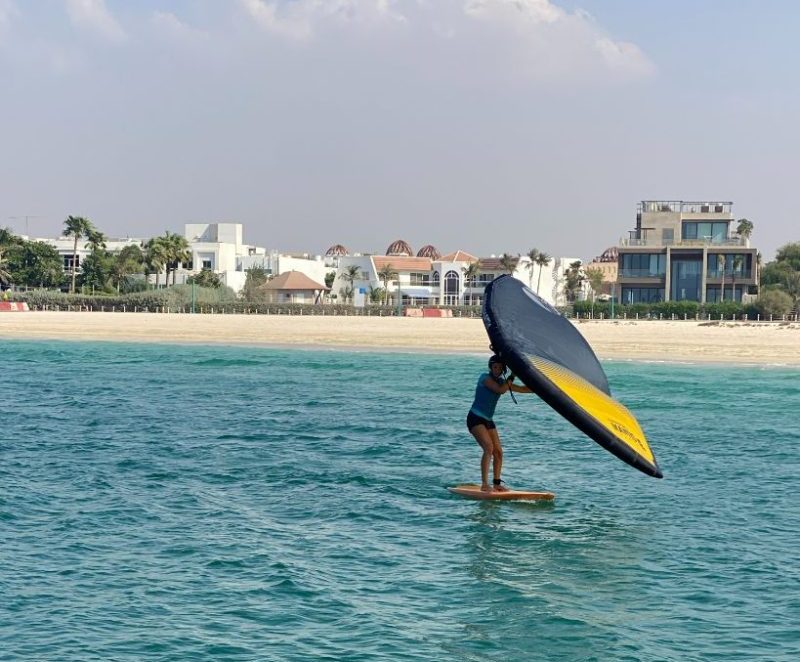
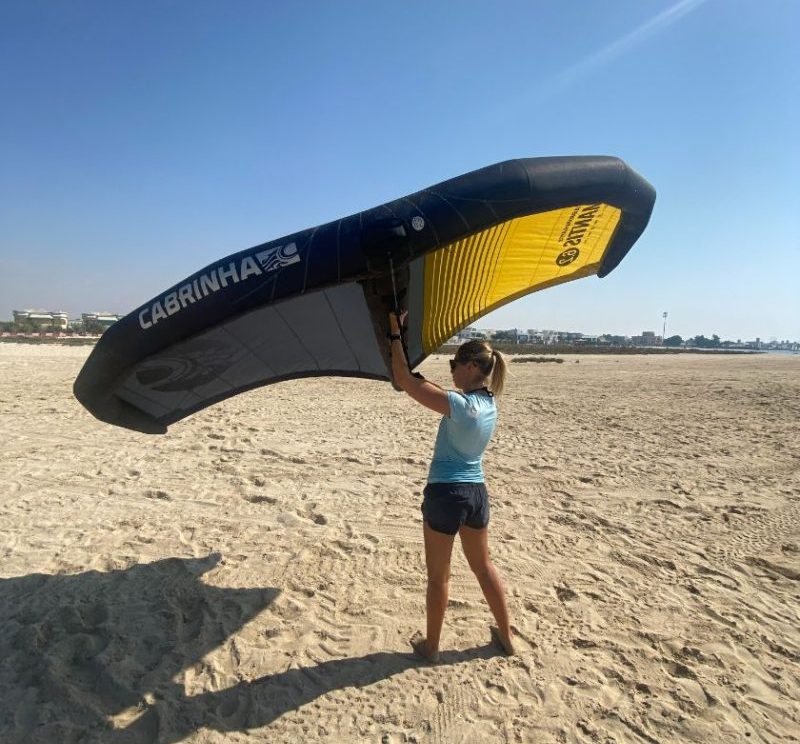


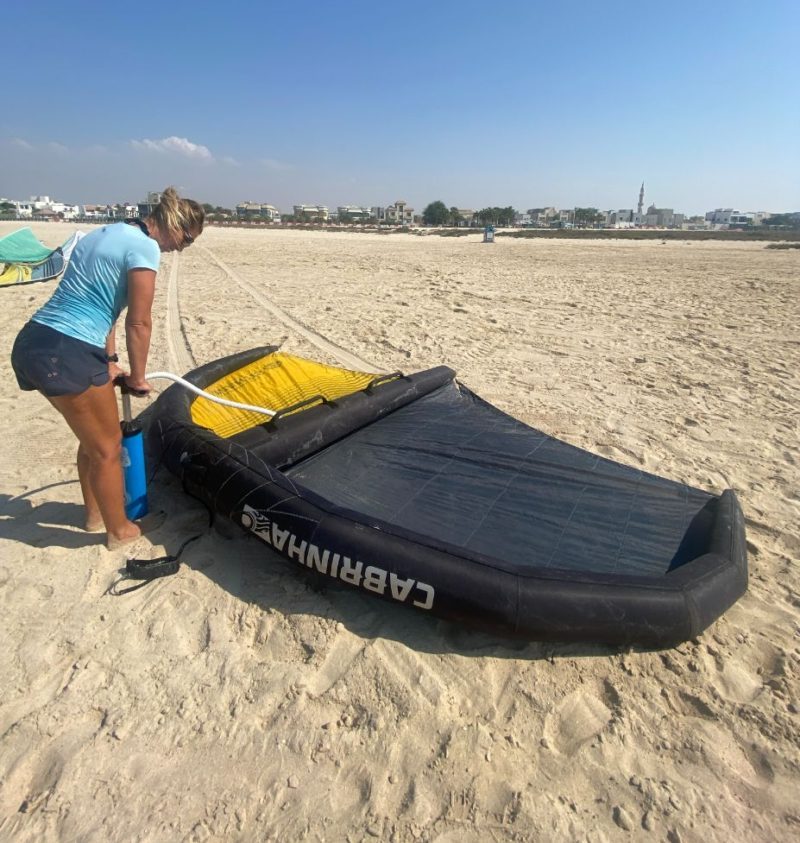
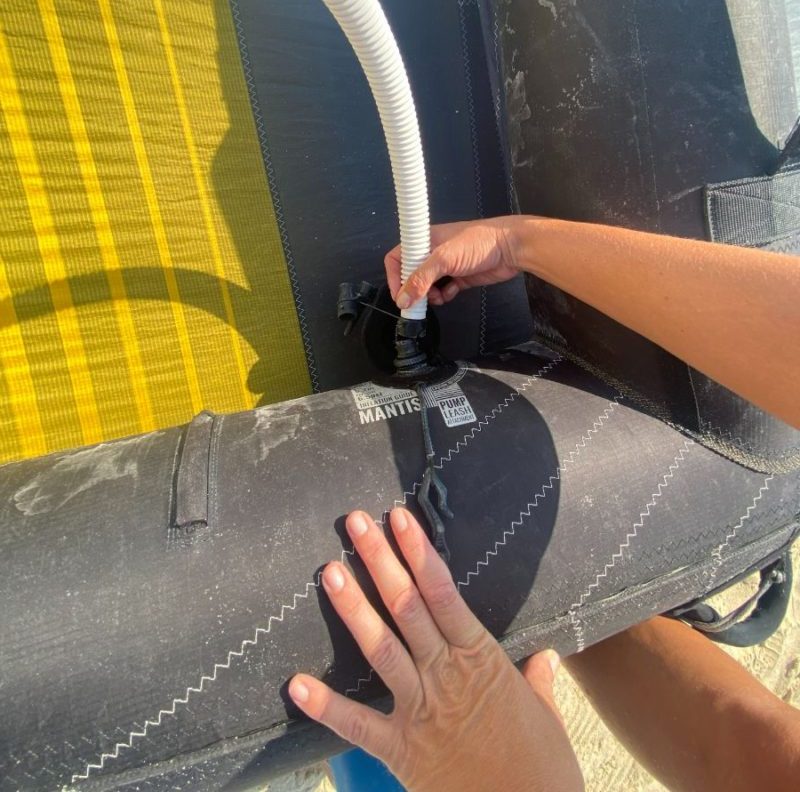
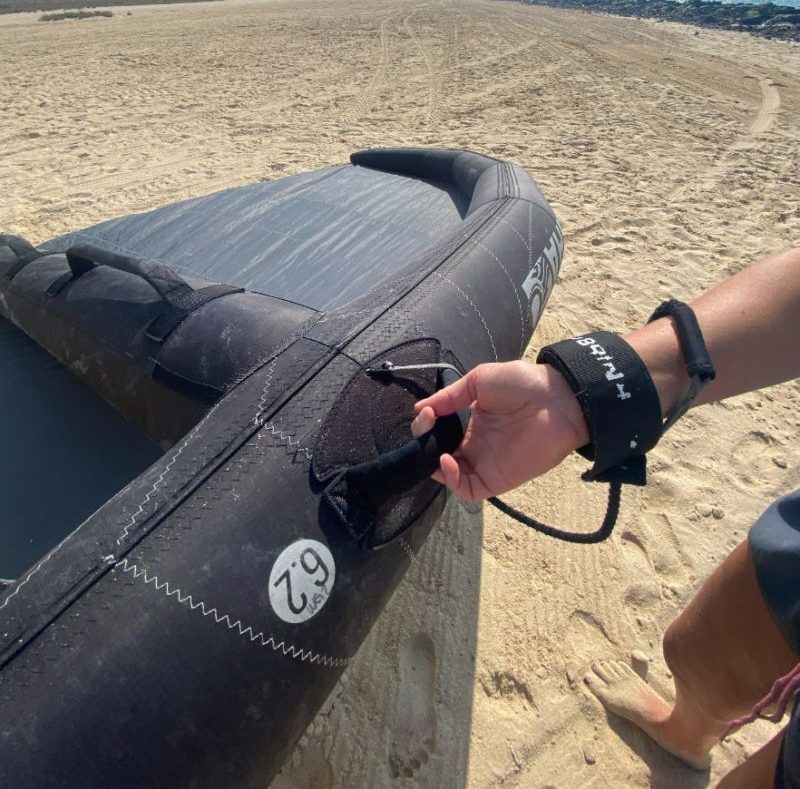
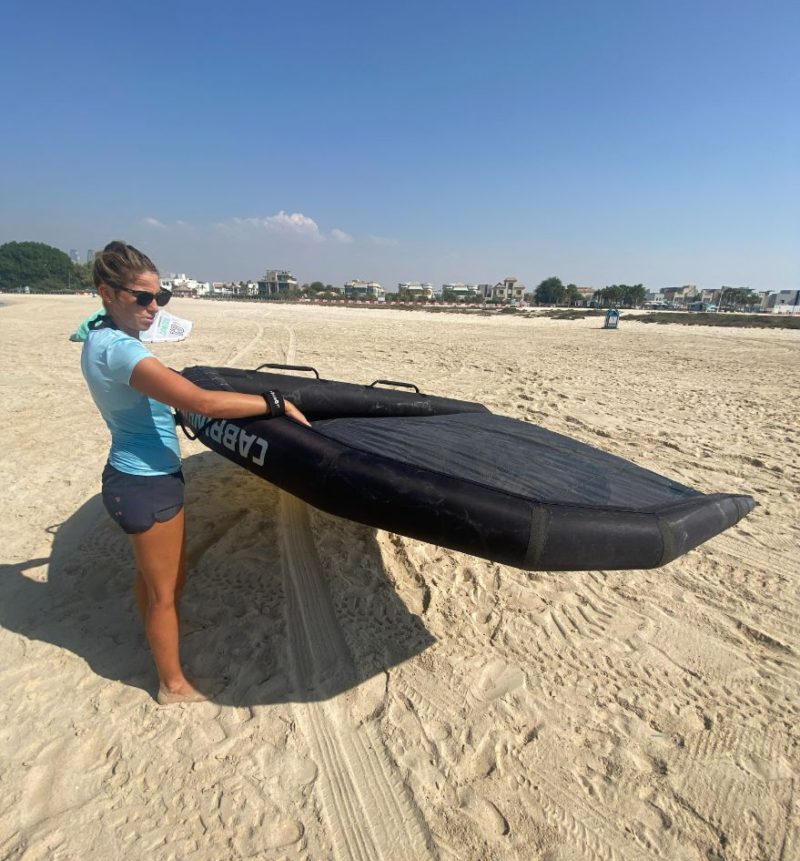
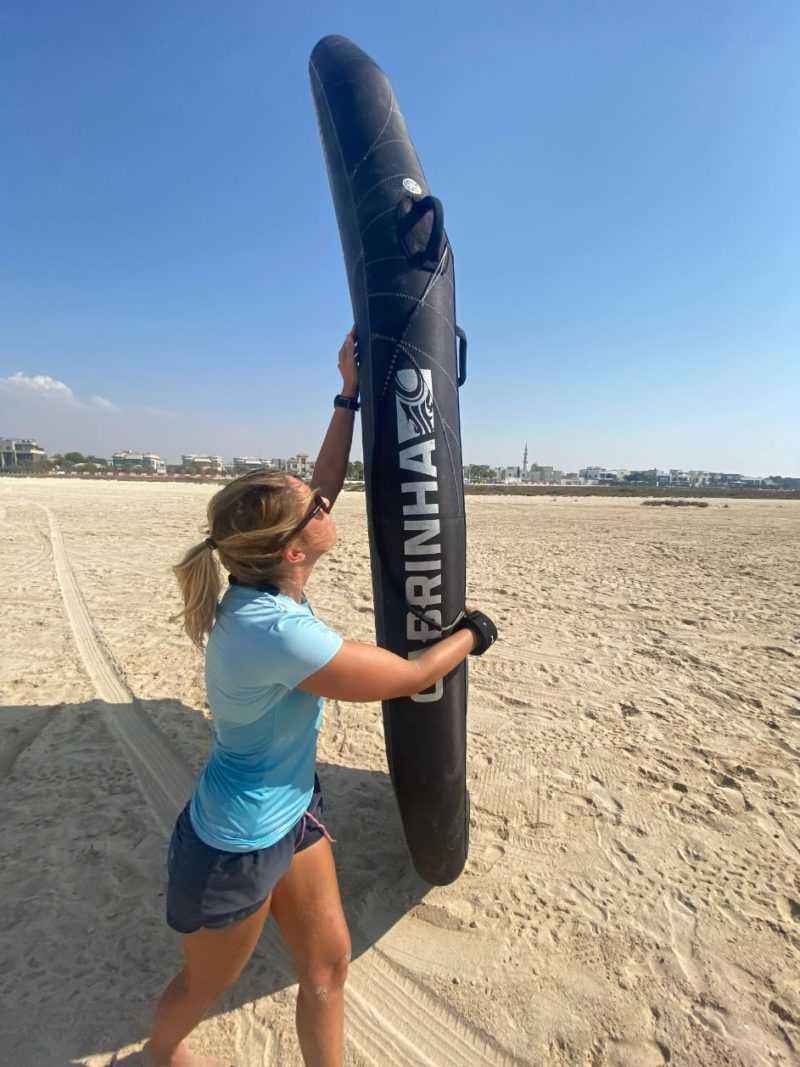

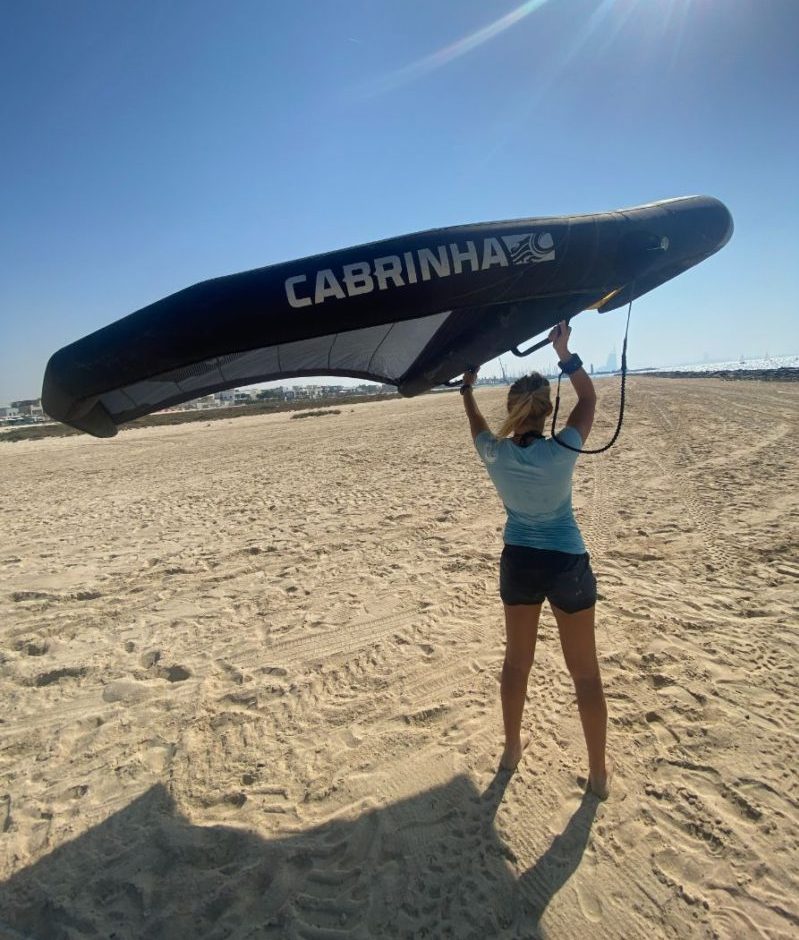

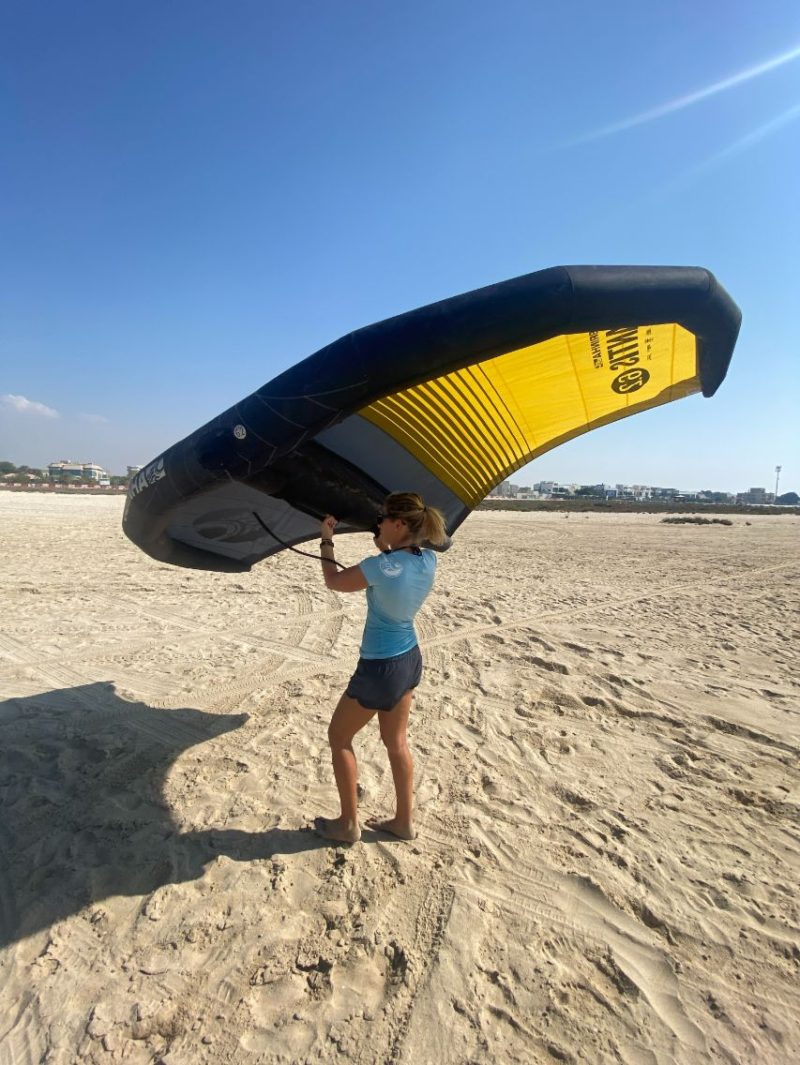

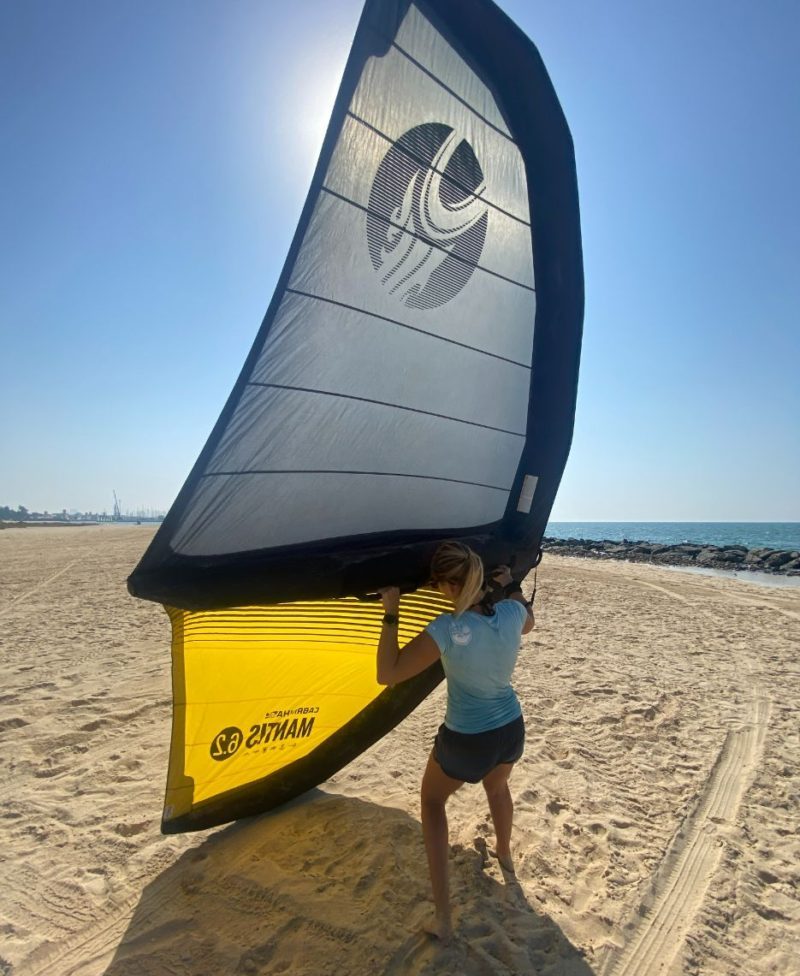
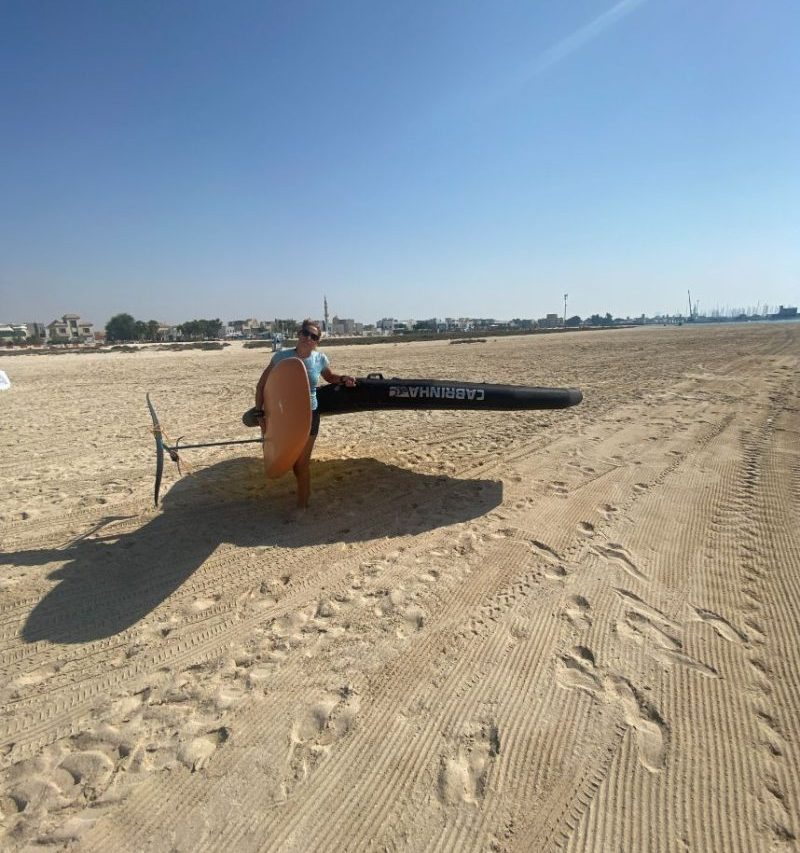
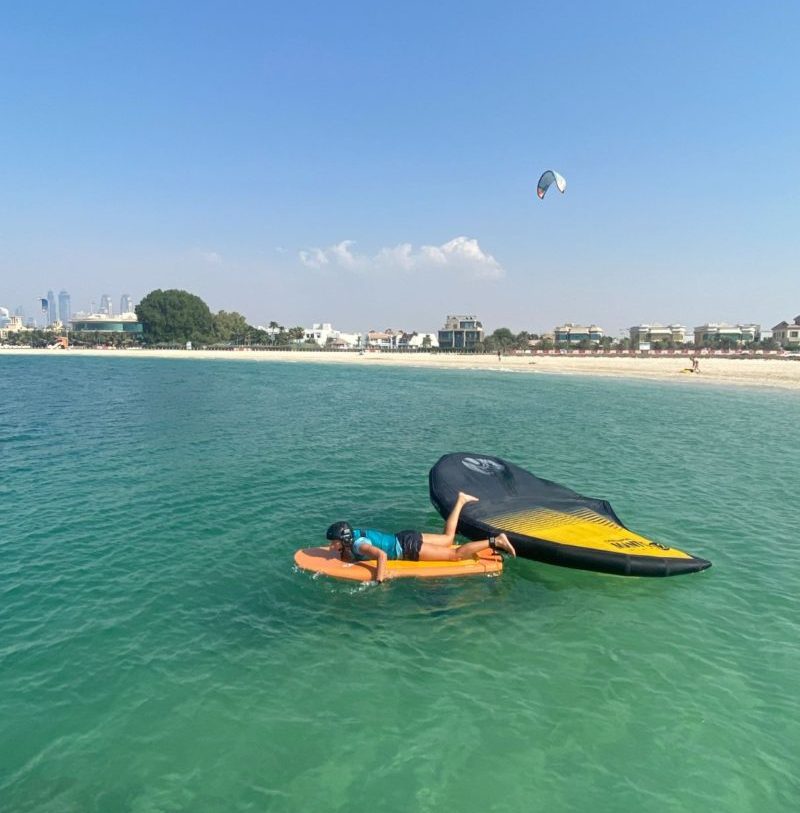
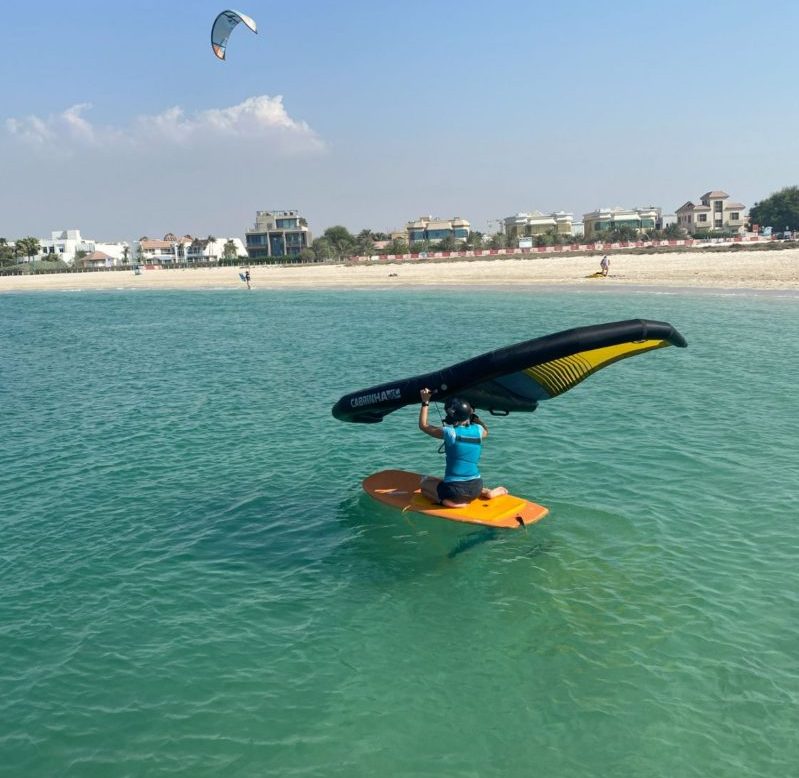
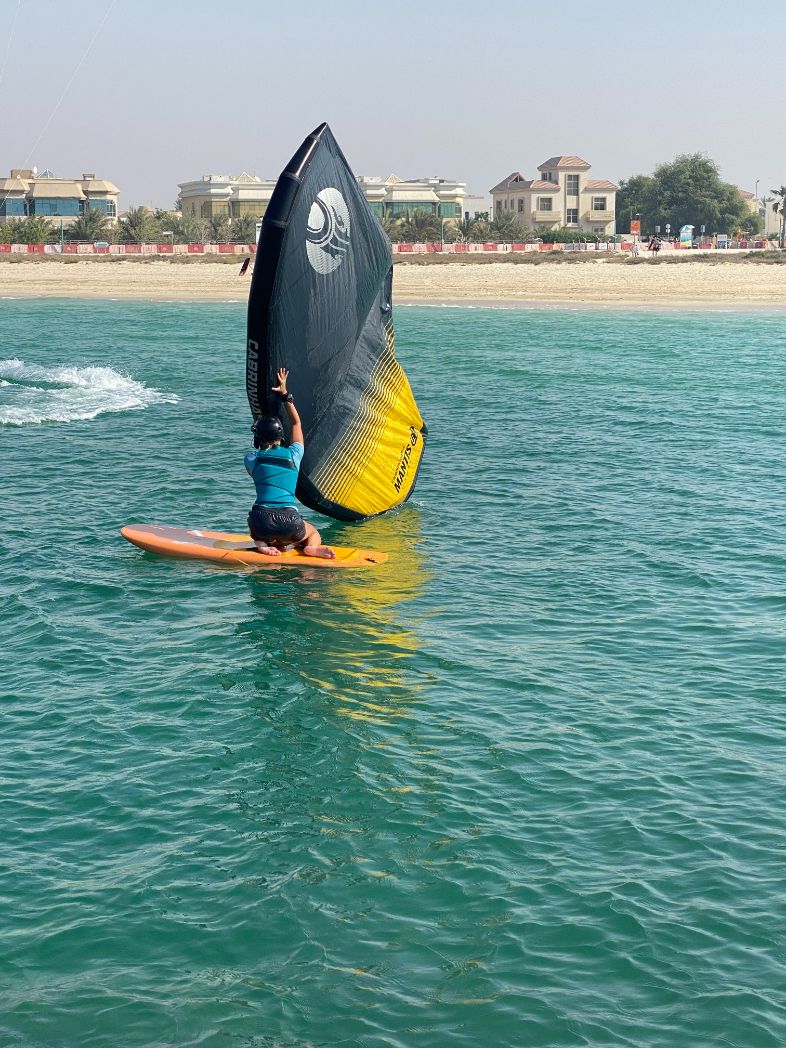
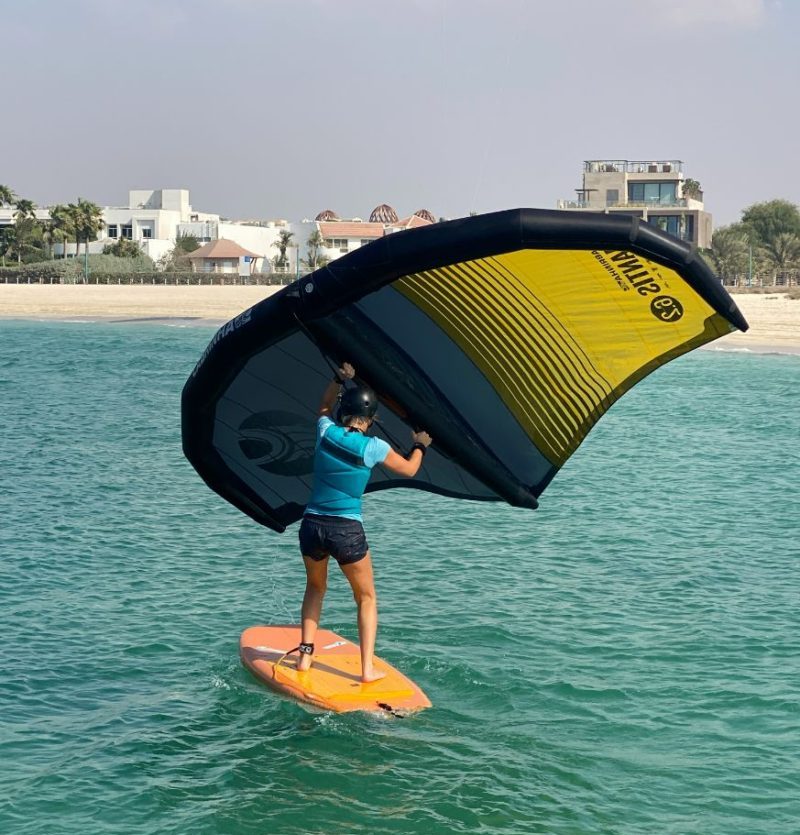
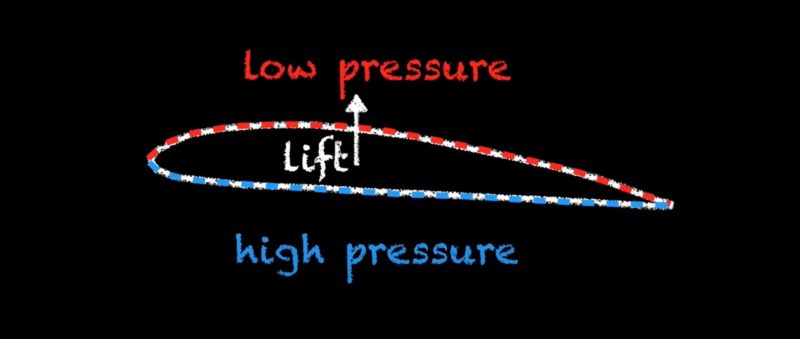 Long story short it requires a certain speed to be able to engage the foil and start to fly but another important factor that we need to be able to control is the pressure on the back and the front foot.
Long story short it requires a certain speed to be able to engage the foil and start to fly but another important factor that we need to be able to control is the pressure on the back and the front foot.